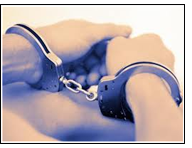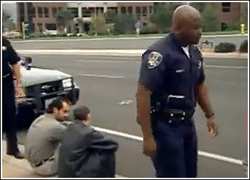|

3-Hour Guard Card Course Part A Details (Chico):
The 3-hour Part A topic and 5-hour Part B topic together
meet the BSIS 8-hour training requirement to apply for CA State BSIS guard card or PSO license.
This 3-hour online course provides Part A, the Power to Arrest topic which is taken online.
Part B,
the 5-hour Appropriate Use of Force (AUOF) topic which is required
by the BSIS to be taken at the classroom location, 50 Landing Circle, Chico, CA 95973.
The 8-hour certificate from Armed Guard Security Training Academy, which is required by the BSIS to apply for a guard card, is provided at the completion of Part B.
3-Hour CA BSIS Power to Arrest (Part A) - $24.00
*Requires 5-Hr In-Person Part B at the Chico location to apply for a Guard Card

IMPORTANT: Part B, the BSIS 5-hour AUOF topic is NOT included with Part A.
To complete the guard card or PSO application training requirements, students must complete Part A online, then purchase and complete Part B at the
Chico location: Armed Guard Security Training Academy - 50 Landing Circle, Chico, CA 95973.
Note that both Part A online and Part B in the classroom are provided by Armed Guard Security Training Academy under BSIS License TFF-1551.
Power to Arrest - PART A & Appropriate Use of Force - PART B
This two part 8-hour course is required to be completed before applying for a guard card.
Part A and Part B
The 3-hour online course offered on this page is Part A only.
The two part training course is approximately
eight hours in length. Part A, the Power to Arrest (PTA) is taken online and covers the first 3 hours. Part B, the Appropriate Use of Force (AUOF) is 5-hours and has to be taken at the in-person training location
in Chico.
Part B is only available to our students after they complete part A online. After completing
Part A online, students then sign up, pay for and take the 5-hour in-person Part B Appropriate Use of Force (AUOF) training at the Chico location.
Part A
(3-hours online), the BSIS PTA section, covers the following topics:
- Responsibilities and ethics in citizen arrest.

- Relationship between a security guard and a peace officer in making an arrest.
- Limitations on security guard power to arrest.
- Restrictions on searches and seizures.
- Criminal and civil liabilities, including both of the following:
a) Personal liability.
b) Employer liability.
- Trespass law.
- Ethics and communications.
- Emergency situation response, including response to medical emergencies.
- Security officer safety.
Part B
(5-hours in-person), the BSIS AUOF section, covers the following topics:
- Legal standards for use of force.

- Duty to intercede.
- The use of objectively reasonable force.
- Supervisory responsibilities.
- Use of force review and analysis.
- De-escalation and interpersonal communication training, including tactical
methods that use time, distance, cover, and concealment, to avoid
escalating situations that lead to violence.
- Implicit and explicit bias and cultural competency.
- Skills, including de-escalation techniques, to effectively, safely, and
respectfully interact with people with disabilities or behavioral health
issues.
- Use of force scenario training, including simulations of low-frequency,
high-risk situations and calls for service, shoot-or-don't-shoot situations,
and real-time force option decision making.
- Mental health and policing, including bias and stigma.
- Active shooter situations.
The two parts above, Part A and Part B, are followed by a final exam which is provided in-person at the Part B training location.
California Code
of Regulations 643: Skills Training Course for Security Guards and PSOs lists the required license training,
including some required in-person training, before applying for a guard card or PSO license.
The online courses are available 24x7, and allow you to work at your own pace, logging in and out as often as needed.
This online training system works on all types of computers, tablets, and smart phones.
|





